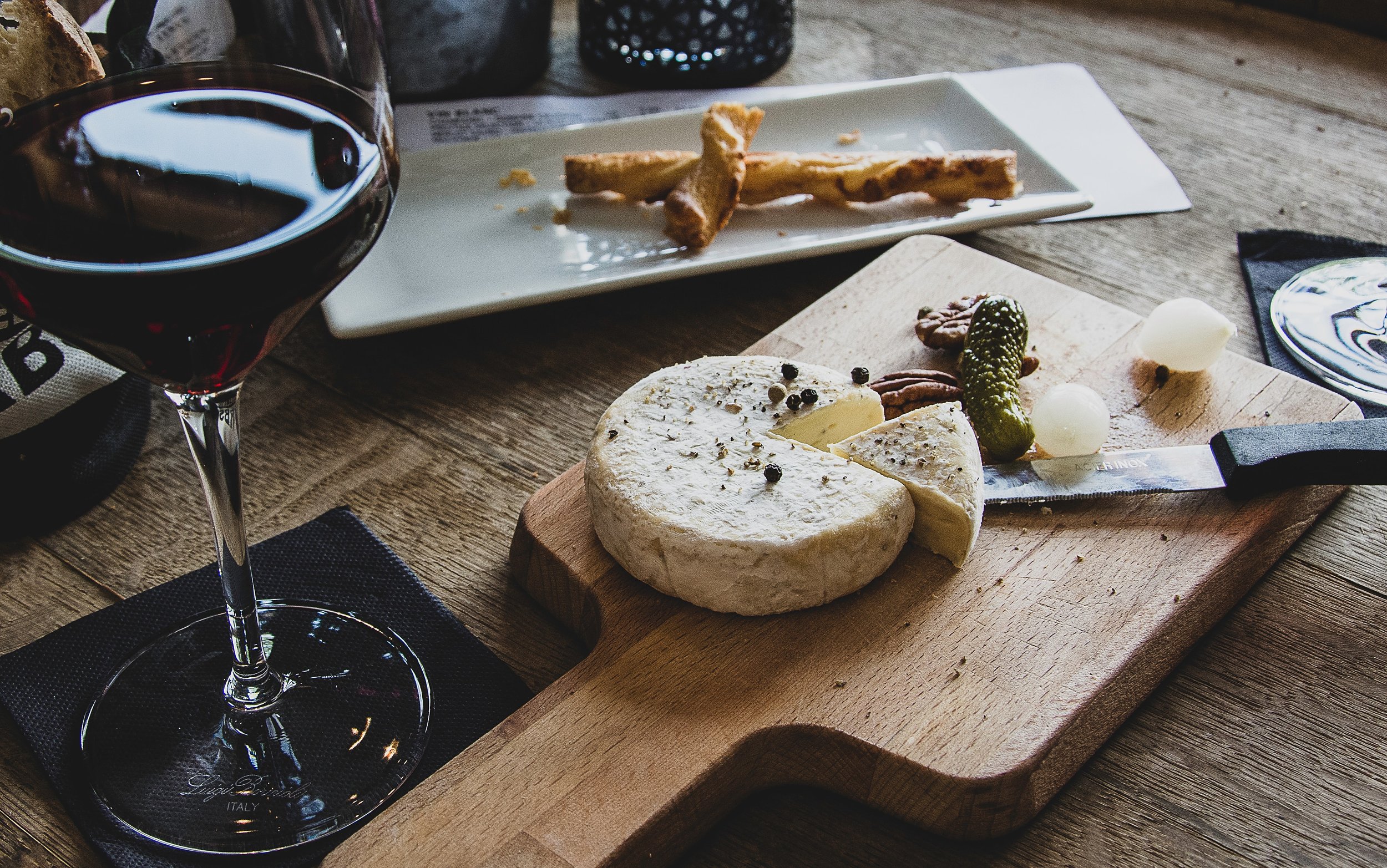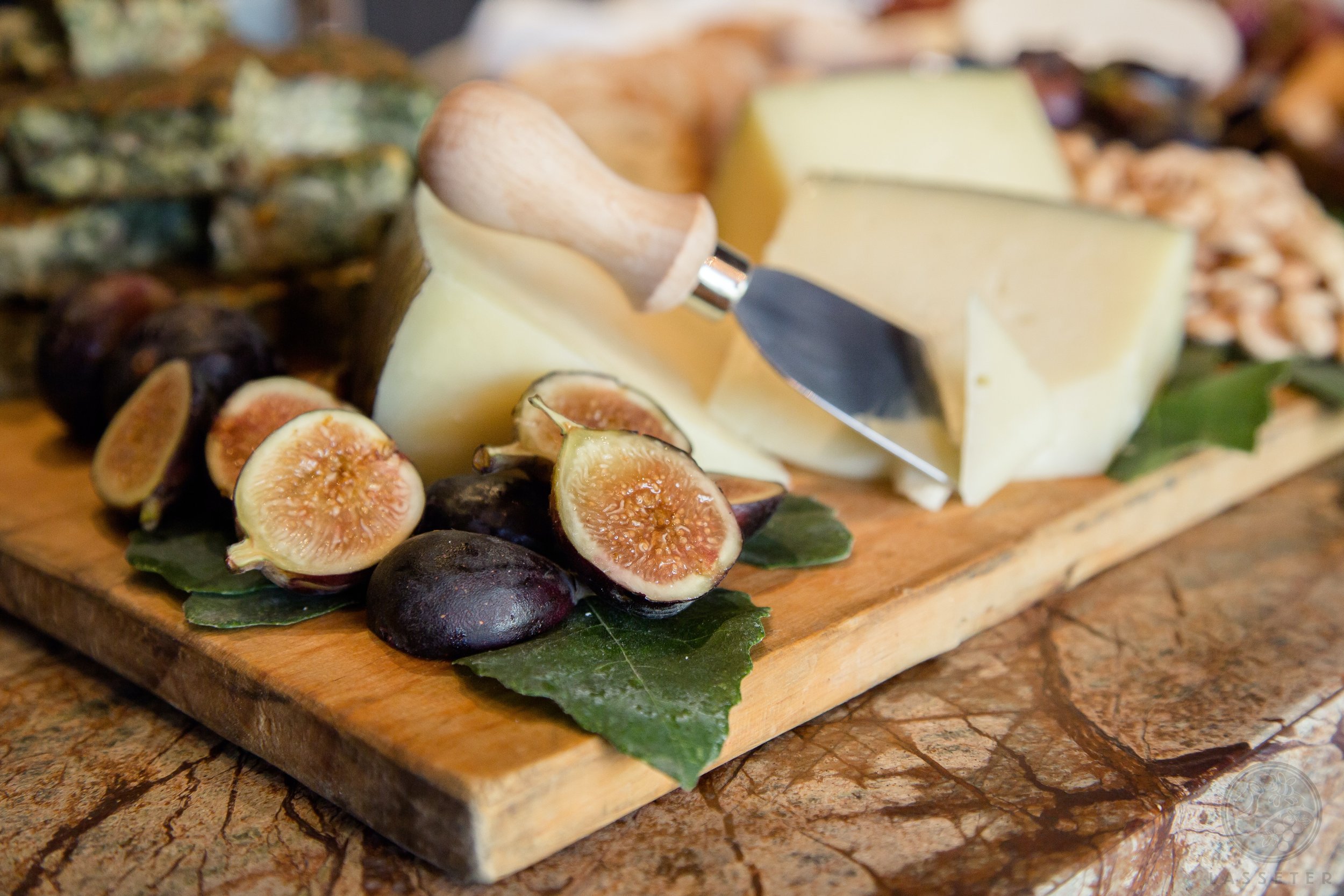French Cheese : Vocabulary and Etiquette
There are around 400 types of cheese in France today, so you can easily understand why cheese is so important in the French culture! With 26.7kg of cheese eaten per person every year, the French are amongst the highest consumers of cheese in the world. Recent surveys show that 96% of French people eat cheese, often daily.
In this week’s post, we will first have a look at some French vocabulary related to cheese, lists of different cheeses and their origins but also the do’s and the don’ts of cheese etiquette : can you eat cheese with crackers, or only with bread? Which wines should you pair which cheeses? How do you choose a variety of cheeses that blend well together on a cheese board? And finally, we will go through some expressions to use at Le fromager.
- Types of common cheeses in French
Cheeses come from one of three sources of animal milk: cow, goat, or sheep. Cow cheese is the most common and its taste is more sobber than goat and sheep.
You can also choose between soft et semi-soft cheeses, pressed & hard cheeses, blue & goat cheeses:
Soft & creamy cheeses: soft or unpressed cheeses that usually have a white ring with a yellow creamy interior : Camembert, Brie de Meaux, Mont d’Or, Pont l’Evèque, Nêuchatel
Semi-soft cheeses: pressed but not heated during the pressing process, so it retains more water : Reblochon, Tomme de Savoie, Ossau-Iraty…
Classic hard cheeses: pressed cheeses because they are pressed out to squeeze the liquid : Comté, Cantal, Emmental, Gruyère, Beaufort, Tomme de Savoie, Mimolette…
Strong blue cheeses: cheeses that have mold grown on them and turned into delicacies called blue cheese: Roquefort, Bleu d’Auvergne,
Classic goat cheese : Sainte-Maure, Crottin de Chavignol, Valencay, Selles sur Cher
Pasteurized: when manufactures produce pasteurized milk, the milk is heated to approximately 65° C (149°F)
Non pasteurized: The milk is heated, but only to about 30°C ( 149°F)
- Cheese : French Vocabulary
Fromage de vache : cow cheese
Fromage de chèvre : goat cheese
Fromage de brebis : sheep milk cheese
Fromage à pâte molle :soft cheese
Fromage à pâte dure : hard cheese
Fromage frais: cheese that has not been aged for more than a few weeks
La croûte de fromage : cheese rind
Un plateau de fromage : cheese board
Un couteau à fromage : cheese knife
Une assiette de fromage : cheese plate
Un accompagnement = an accompaniment
Une fromagerie : a cheese shop
Un fromager : a cheesemonger
AOC : protected designation of origin(PDO)
Fermier: farmhouse cheese, which is produced on the farm where the milk is produced.
Industriel: factory-made cheese from milk sourced locally or regionally, perhaps all over France (depending on the AOC/PDO regulations for specific cheeses
L’ affinage: French word for the aging or ripening of cheese
- Cheese Etiquette : The do’s and The don’ts
1. When to eat cheese
It’s important to remember that cheese is not an appetizer in France, but it may be offered at an apéro (apéritif). French usually eat cheese after the main dish and before the dessert. It can be served at lunch and at dinner. In Paris, it’s widely acceptable to eat cheese at any time of day—breakfast, lunch, dinner, dessert or whenever the urge strikes. Many restaurants offer une assiette de fromage ( cheese plate) on their menu.
2. Which cheeses to buy for a perfect “plateau de fromages”!
When buying cheeses for your board, always have in mind that you should always serve a minimum of three varieties: a soft cheese, a hard cheese, and one blue or goat’s cheese.
If you stick to the tradition, cheese should be served in odd numbers, usually three, five or seven. It’s usually served whole or in large pieces, so that it will remain moist and keep its flavor.
The “correct” order to eat cheese in France is from the most mild (light flavored) to the most strong (stinkiest). So you’ll usually start with the cheese that is very light colored and has little smell such as a comté or a goat cheese, and then work your way up to the blue cheese. Blue cheese is always last.
3. How to store it
You should remove your cheese from the fridge a minimum of thirty minutes before serving. It’s easier to cut hard cheeses when they’re cold rather than at room temperature. Make sure to keep the wrapping paper the cheese came in.
4. How to serve cheese
On a cheese board
First of all, don’t cut your cheeses before serving and place them on a “planche de fromage” (cheese board). Aesthetically speaking, cheese boards can look beautiful when they are arrayed fruits and nuts. If you enter planche de fromages on Google you might pick up ideas that will make your cheese board look like a piece of art! When serving a cheese course, you will need:a knife, preferably a cheese knife and a fork.
With bread
The choice of bread is also part of the etiquette. Different types of breads are acceptable: baguette (of course) but also sourdough, whole seed, nut bread etc. Just avoid crackers,
the French believe that crackers tend to take away from a cheese’s flavor. If you’re American you might think this sounds crazy, I partially agree but I’m only telling you the rules here!
Don’t spread the cheese like butter. The correct way to enjoy your cheese in France is to gently place a small piece of cheese on a bite-sized morsel of the bread and then put it nicely into your mouth.
According to French dining etiquette the platter of cheese should be passed around to each guest.
5. How to cut cheese correctly
The video just above should help you. The most common way to cut the cheese is to cut into triangular wedges, however this depends on the cheese, as each shape has its own proper way to be sliced :
Round cheeses (e.g., Comte) – cut in thin triangular sections that resemble cake slices (should be around the thickness of a pencil)
Log-shaped goat cheese – cut in parallel slices
Square cheeses – cut in triangles
Rectangular cheeses – cut slices that are parallel to the rind
Pyramid-shaped cheeses – cut into one slice, then halve it
Wedge-shaped cheeses (e.g., Brie, Roquefort) – cut along the side of the wedge diagonally, being careful not to cut off “the nose” (the tip of the cheese that is nearest to the center) because it holds the most flavor. Make sure that you get more of the side and less of the middle so that others can also get some of it.
6. To eat or not eat the rind
One issue is whether you should eat a cheese’s rind or not.
All soft rinds (croûte is the French word for rind and crust ) are edible. Some harder rinds are also edible but more difficult to eat, in that case you don’t have to. If you choose to cut the rind off the cheese, it isn’t a terrible faux pas.
Here are a few easy to remember general guidelines:
Hard cheeses: don’t eat the rinds.
If the cheese is very soft, gooey, or in a wooden box: eat the rind.
Goat cheese: eat the rind.
Blue cheese: eat the rind.
If the cheese has a wrinkly, brain-like textured rind: eat it.
If the cheese has spices, herbs or other flavoring on the outside: eat it.
If the rind is very moldy, especially thick, crusty, or is grey or dark colored: use your discretion. Some people love the flavor of these rinds, some don’t.
7. How to pair cheese & wine
you can create amazing wine and cheese pairings on your own. Let’s take a look at 5 tips related to classic pairings and why they work.
Tip 1 : Pair wine & cheese with equal intensity ( a delicate fruity flavor of Comté will be perfectly balanced if paired alongside a Pinot noir)
Tip2 : Bold red wines pair best with aged cheeses ( choose cheeses aged at least a year, including Cheddar, Gruyère, Gouda, Parmesan-style varieties)
Tip3 : Match funky cheeses with sweeter wines ( Sauternes with Roquefort is delicious)
·Tip4 : Sparkling wines with soft creamy cheese ( creamy, sticky cheeses such as Brie, Muenster, Camembert or Époisses de Bourgogne will pair perfectly with sparkling wines)
Tip5 : When in doubt, get a firm nutty cheese ( When serving several wines, it is more difficult to be sure which cheese to pair, keep a safe route and bet on most popular choices with all styles of wines. Nutty cheese such as Gruyère, Comté Extra,Emmental etc will be perfect.
8. Try new trends of cheeses
Cheeses just like other types of food are perfect to make experiences and try original combinations of tastes and flavours. For Jeremy Platini, the owner of Fromagerie Platini * who was awarded Meilleur Ouvrier de France in his category, it is possible to make fantastic and unexpected combinations of tastes with cheeses and spices and herbs.
He offers a Comté covered with Sichuan pepper which is a very interesting and tasty way to rediscover a timeless French cheese on a new perspective. Jeremy Platini uses classic French cheese as a basis and then let his imagination travel around the world looking for herbs, spices, which could be paired with classic French cheeses. Another of his popular cheese is a fresh goat cheese covered with harissa (a hot spice) olive oil and fresh thyme. It is what we call in French “une tuerie” ! ( it’s amazing !)
Fromagerie Platini: 25 rue de Montreuil 94300 Vincennes
-What to say in a cheese shop “le fromager”
Client : Je voudrais un morceau de Comté s’il vous plait
I would like a piece of Comté please
Un morceau: a piece of (and then you give the name) un petit morceau: a small piece of, un morceau moyen : an average piece, un gros morceau : a big piece
Fromager : Vous voulez lequel ? Nous avons un Comté jeune 18 mois, 24 ou 36 mois
Which one would you like? We have a 12 month Comté, 24 or 36 months.
Pressed cheeses have a maturation process that last between 12, 36 months. Generally, the more matured it is, the better it is !
Client : Je voudrais un Comté 24 mois et aussi un chèvre très sec
I would like a 24 month Comté and dry goat cheese
Goat cheeses can be dry, fresh or in between (we call this “entre deux” in French)








